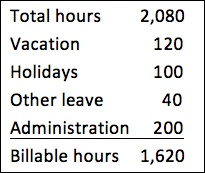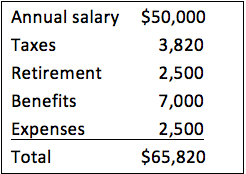Strengthening the Pillars of Free Press: Support the Society of Professional Journalists Foundation.
The free press is more than just an institution; it represents the foundation of our nation and the freedoms we cherish. Your support is not just appreciated—it's essential. With your help, we can ensure that the light of responsible journalism continues to shine brightly, illuminating the path forward for our democracy. Help us reach our year-end goal of raising $50,000.
Donate Today
Making a living
Time and money
On Your Own: A Guide to Freelance Journalism
> Home
> Introduction: The freelance side of life
Freelance journalism 101
> Dressing for success as a freelancer
> Staying productive even when you’re not working
Business matters
> Five reasons to pay attention to business
> Contracts and copyright — beyond the basics
> Getting your business organized
> Separating yourself from your business
> Insurance considerations for freelance journalists
Making a living
> A simple way to boost your pay: Ask
> Retirement planning: Where to stash your cash?
Finding work
> Inspiration for finding the story
> Brainstorming ideas you can sell
> Pitching your way to a full story calendar
> Tips on freelancing for newspapers
Marketing yourself
> Paying attention to business
> Making a home for your business on the web
> Networking: the key to staying happy and fed
> Business cards help make the best first impression
Tools of the trade
> Why journalism ethics matter
> Four tips for better self-editing
> Selected websites for finding freelance journalism assignments
The adage “time is money” holds as much truth for freelance journalists as for any business manager. Nonetheless, it’s a hard concept to grasp, in the freelance context, without first breaking it down into its two components — time and money.
Even freelance journalists who are paid by the word, page or piece need to know how much they make for an hour of effort. Otherwise, how can they take control of their businesses, set realistic goals or figure out how to make more money in the future? And have no doubt: A freelancer is in business, and has to think in a businesslike way.
Thinking this equation through is not easy because there are so many factors to consider and so many of them are variable and individual. What’s a reasonable freelance workload that allows you to earn as much as you need and still have time for the other things in your life? What’s a “good” salary for a freelancer? Just how much is your time worth?
On the assignment level, the basic formula is to divide your payment by the number of hours you work on it to come up with the hourly rate you were paid for your work. To find out how much you made in a week, month or year, the formula is to divide the amount you billed by the number of hours you work in that period. But neither of these simple equations will give you an honest answer. If you only count the hours you produce income and the cash you receive for those hours, you’ll short-change yourself, burn out and not have as much money as you need.
Time — out of hand
The concept of “billable hours” is most familiar to lawyers, accountants and consultants whose companies require them to spend more hours at work than they bill. Standards are set for the number of hours an associate or partner must bill per week or month, but often the number of hours that employee has to work are not limited.
For freelance journalists, it’s helpful to start by figuring out how many hours you want to work in a year. If freelancing is your full-time job on a 40-hour-a-week schedule, for example, you would set your annual hours at 2,080 and begin subtracting all the hours you’ll take off during the year.
 It’s hard to figure administrative time because it’s so variable. One rule of thumb among freelance writers and editors is to leave one day a week (or its equivalent) for administrative time. Freelancers with full client lists may not spend as much time on marketing and promotion, though they still may need to spend time pitching stories to established clients. Some freelance journalists with full work schedules hire someone else to take care of bookkeeping, but they still need to spend some time working with the bookkeeper or accountant. The variability of these factors is what makes it useful to have a rule of thumb.
It’s hard to figure administrative time because it’s so variable. One rule of thumb among freelance writers and editors is to leave one day a week (or its equivalent) for administrative time. Freelancers with full client lists may not spend as much time on marketing and promotion, though they still may need to spend time pitching stories to established clients. Some freelance journalists with full work schedules hire someone else to take care of bookkeeping, but they still need to spend some time working with the bookkeeper or accountant. The variability of these factors is what makes it useful to have a rule of thumb.
Contributor: Hazel Becker
Resources:
– Dollars and sense for a discussion of typical freelance journalism pay scenarios
– The Editorial Freelancers Association (EFA) Chart of Common Rates (updated in 2014)
– Writer’s Market guide to rates
– Association of Independents in Radio’s basic rate guide for independent audio producers
Last updated: January 26, 2015
Copyright © 2012-2018 by Society of Professional Journalists. All Rights Reserved.
Questions or comments? Please post them in the Freelance Guide Comments forum of the Freelance Community Board or email [email protected]. We'll answer as soon as we can!